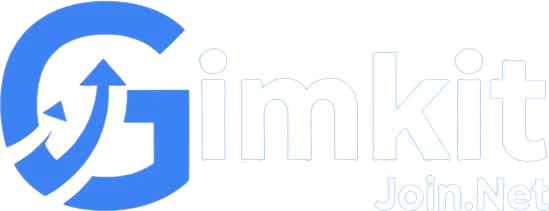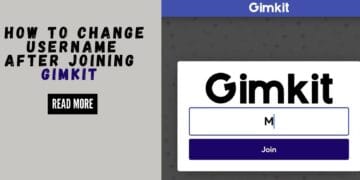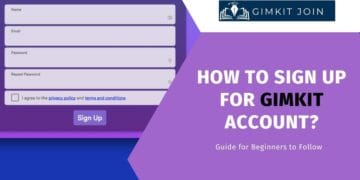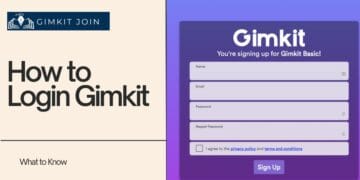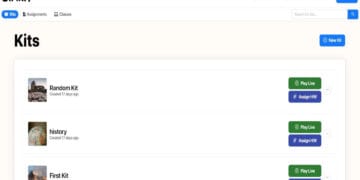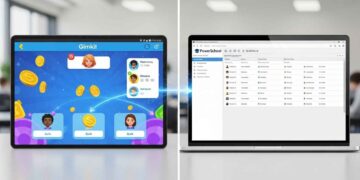Corporate training is often seen as a necessary evil. Endless slideshows, yawn-inducing webinars, and dry policy manuals. We’ve all been there. But what if there was a way to make training sessions genuinely fun? What if onboarding could be a thrilling game instead of a chore?
The answer lies in a powerful tool you might have heard of from a classroom setting: Gimkit. This guide will show you how to take a tool designed for students and transform it into a dynamic, engaging platform for Gimkit corporate training. From new hire onboarding to energizing team-building events, we’ll explore how to use gamification in corporate learning to boost morale, knowledge retention, and employee engagement.
Why Gamified Training is the Future of L&D
The traditional model of learning and development (L&D) is outdated. Today’s employees—especially those working remotely—need more than just information; they need an experience. This is where gamification comes in. By turning learning into a game, you tap into our natural desire for competition, rewards, and social interaction. This is backed by extensive research on gamified learning.
- Improved Engagement: Games capture attention in a way that lectures can’t.
- Higher Retention: The act of actively participating in a game helps cement information in memory.
- Real-Time Feedback: You can instantly see where your team is struggling and adjust the content as needed.
Instead of just checking a box, employees become active participants in their own learning. It’s a win-win for both your team and your company’s bottom line.
Strategy #1: Gimkit for Onboarding & Knowledge Transfer
Your new hires are a sponge for information, but they can easily get overwhelmed. Using Gimkit onboarding turns the daunting task of learning company policies and culture into an interactive, low-stress experience. In fact, companies with structured onboarding processes have been shown to improve new hire retention rates.
Building Your First Onboarding “Kit”
 A “Kit” is Gimkit’s term for a quiz. It’s where you’ll store all your training content.
A “Kit” is Gimkit’s term for a quiz. It’s where you’ll store all your training content.
- Start with the Basics: Create a kit that covers company history, the mission statement, and core values. Instead of just listing them, frame them as questions: “Who founded the company and in what year?” or “Which of these is a core company value?”
- Policies & Procedures: Turn your employee handbook into a game. Create questions about vacation policies, expense report procedures, or security protocols. This is far more effective than just handing someone a PDF to read.
- Meet the Team: Introduce new hires to their colleagues by creating a kit with fun facts about team members. Questions like “Whose favorite coffee is a caramel macchiato?” or “Who is secretly a great baker?” are great for breaking the ice.
The Scavenger Hunt Method for Hands-On Learning
 For an even more engaging experience, use a Gimkit Kit to create a knowledge scavenger hunt.
For an even more engaging experience, use a Gimkit Kit to create a knowledge scavenger hunt.
- The Challenge: Design a kit where the answer to each question is a password, a key piece of information, or a hidden item in another document or a specific software tool.
- The Action: For example, one question might ask, “What is our company’s Q3 revenue goal for the Northeast region?” The new hire would have to go into the company’s internal CRM or a shared document to find the answer.
- The Result: This method is an excellent way to familiarize new employees with your company’s tech stack and internal resources, making it a highly effective way to use Gimkit for employee onboarding.
Strategy #2: Gimkit for Team-Building & Morale
Beyond formal training, Gimkit team-building is a fantastic way to boost camaraderie and employee morale. This is critical, especially given the proven importance of company culture in retaining talent. It’s perfect for both in-person and remote teams.
Fun & Games to Connect the Team
- Personalized Quizzes: Create a fun, no-stakes quiz with personal trivia about team members. You can use the “KitCollab” feature to have everyone contribute a fun fact about themselves. This makes everyone feel included and helps the team learn more about each other in a lighthearted way.
- Themed Game Modes: Gimkit has a variety of game modes that are perfect for employee engagement games. “Trust No One” is a great way to spark some playful conspiracy theories, while “Blastball” encourages collaborative strategy in a fast-paced environment.
Collaborative Challenges for Problem Solving
 Use a Gimkit game for a collaborative problem-solving exercise.
Use a Gimkit game for a collaborative problem-solving exercise.
- Scenario-Based Questions: Create a kit with scenario-based questions that require teams to work together. For example: “A client is unhappy with the project timeline. What is the next best step?”
- Team Mode: Run the kit in Team Mode, where groups work together to answer questions and accumulate points. This reinforces teamwork and healthy competition, making it a dynamic way to use Gimkit games for team-building.
Gimkit’s Core Features for Corporate Learning
Gimkit’s features are designed with classroom learning in mind, but they translate seamlessly to the corporate world, following many of the best practices for leading a great training organization. This makes it a versatile corporate learning tool.
Real-Time Feedback and Analytics
 As the host, you get access to a dashboard that shows how your team is performing. You can see which questions were most missed, which allows you to identify knowledge gaps and address them in real-time. This is a crucial feature for any effective L&D professional.
As the host, you get access to a dashboard that shows how your team is performing. You can see which questions were most missed, which allows you to identify knowledge gaps and address them in real-time. This is a crucial feature for any effective L&D professional.
Asynchronous Learning with Assignments
 For remote or globally distributed teams, live games aren’t always possible. Gimkit’s “Assignments” feature allows you to send a kit to your team, who can complete it on their own time. This is perfect for asynchronous learning, giving everyone the flexibility they need while still ensuring the training is completed.
For remote or globally distributed teams, live games aren’t always possible. Gimkit’s “Assignments” feature allows you to send a kit to your team, who can complete it on their own time. This is perfect for asynchronous learning, giving everyone the flexibility they need while still ensuring the training is completed.
Scalability and Secure Use
 Gimkit offers group licensing, which is ideal for a company-wide training initiative. Furthermore, you can make your kits private, ensuring that sensitive company information stays secure and is only accessible to your employees.
Gimkit offers group licensing, which is ideal for a company-wide training initiative. Furthermore, you can make your kits private, ensuring that sensitive company information stays secure and is only accessible to your employees.
Conclusion: From Classroom to Boardroom
It’s time to shake up corporate training. By harnessing the power of a proven educational tool, you can make your Gimkit for business initiative a success. From streamlined onboarding processes to genuinely fun team-building games, Gimkit offers a fresh and effective way to engage employees, keeping up with key HR technology trends.
The best part? You’re not just giving them information; you’re creating memorable experiences that foster better collaboration, boost company culture, and ultimately build a more knowledgeable and motivated team. Stop dreading your next training session and start turning it into a game.
